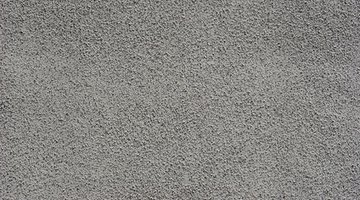How to Apply Acrylic Stucco
Stucco is a type of coating that generally consists of water, aggregate, and adhesive. It provides significant, noticeable texture to smooth surfaces like brick, concrete, and cinder block. Applying ordinary stucco can be a time-consuming process. However, acrylic stucco goes on very much like ordinary paint.

Things You Will Need
- Pressure washer
- Metal putty knife
- 80- to 120-grit sandpaper
- Blue painter's tape
- Heavy-duty fabric dropcloths
- 5-gallon bucket
- Wooden stir stick
- Nap roller cover
- Roller frame
- Extension pole
- 3- to 4-inch latex paintbrush
- Latex primer
It also provides better adhesion, breathability, flexibility, and durability than ordinary stucco. Before you get started, however, you need to understand the proper preparation techniques and the subtle intricacies associated with applying acrylic stucco.
-
Wash the surface using a pressure washer. Focus pressure on old chipping and peeling paint. Allow the surface to dry.
-
Scrape away any remaining loose paint with the metal putty knife.
-
Smooth any chipping paint using sandpaper.
-
Cover any areas you don't want coated with acrylic stucco using painter's tape.
-
Cover flooring with fabric dropcloths.
-
Cover any raw unpainted wood exposed during the scraping process with primer using the latex paintbrush. Let the primer dry for two hours.
-
Wash the brush with water.
-
Pour the acrylic base into the bucket and stir in the stucco texture using a wooden stir stick.
-
Apply the stucco using the roller. Apply vertically, moving very slowly to avoid slinging bits of stucco onto other surfaces. Dip the roller often to ensure a full, even texture.
Tip
Do not use plastic dropcloths in place of fabric ones as this may cause you to track the wet acrylic stucco onto other surfaces.
Warning
Never attempt to apply acrylic stucco to raw, unpainted wood or it will peel up.
Tips
- Do not use plastic dropcloths in place of fabric ones as this may cause you to track the wet acrylic stucco onto other surfaces.
Warnings
- Never attempt to apply acrylic stucco to raw, unpainted wood or it will peel up.
Writer Bio
Ryan Lawrence is a freelance writer based in Boulder, Colorado. He has been writing professionally since 1999. He has 10 years of experience as a professional painting contractor. Lawrence writes for High Class Blogs and Yodle. He has a bachelor's degree in journalism and public relations with a minor in history from the University of Oklahoma.
Photo Credits
- stucco image by dbvirago from Fotolia.com
- stucco image by dbvirago from Fotolia.com
More Articles



